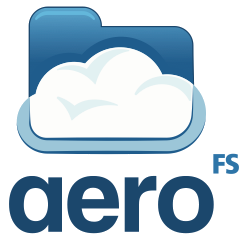Large file storage for a small company like this.
I think that any development team sooner or later faces such a seemingly primitive task as

And if in the case of the first and second, many excellent tools are offered, in particular for bug tracking, there are Redmine , Trac known to everyone, and for managing versions of Subversion , Git , Mercurial , then to properly organize file storage you have to reinvent the wheel again.
What do I mean by a file server? Good question. Ideally, this should be a directory-type system capable of storing large amounts of binary files (pdf, doc, xls, msi, avi, etc.), which allows tagging files for flexible search in the repository, automatically indexing their contents and metadata, search by set of criteria, provide access to files both locally and through a browser (web interface), edit files together, have clients for different OSs synchronize versions from the server, but something I dreamed about ... Of course, there is no such system . Now, probably, many will object to me and point to Microsoft SharePoint Server , but for a small company this product is very heavy due to the difficulty in maintenance and the astronomical price.
Such options as Dropbox, SkyDrive and others are immediately discarded, as the management does not want to distribute the company's projects to no one knows where, again there are restrictions on the access speed (in the case of a file server on the local network, most requests come through high-speed connections and only part of them comes through the web -interface), as well as on the size of the stored data.
')
What are some free analogues that partially solve the problems listed above? I have made a thorough study of this issue and am ready to share my bitter experience with you.
I will say right away that I am still in search of the best option and the means I will discuss below only partially satisfy the requirements. Combining several means, maybe there is a chance to get the desired effect.

Recently a new version (4.5) of the system for organizing the storage, synchronization and exchange of OwnCloud data was released. Earlier, a wonderful article about OwnCloud appeared on Habrahabr, which motivated me to get to know the cloud better.
On the features of the installation process OwnCloud BlackIce13 habrarayer was written an excellent article Experience installing ownCloud 6 on Debian 7 wheezy .
The first impression was simply magical: a modern web-interface, the ability to view online (txt, PDF, ODF) and edit (txt) files, calendar, tasks, address book, WebDAV synchronization, search by content, and most importantly mounting local folders and external storages via FTP, Samba, and others. However, after a more intimate acquaintance, a huge number of bugs and glitches were discovered, both innocuous and even fun enough, so the complete and irreversible crash of the system. With OwnCloud, enemies do not need to use tricky DDoS attacks, since this function was originally incorporated by the developers into the core of the system.
Most interested in the function of mounting the remote file system via Samba. That is, the local network was allocated a web-server with a project management system and OwnCloud, as well as a simple Windows-based file server, from which the web-interface would pull data for remote access. However, the mount via Samba did not want to function under any circumstances, despite the officially announced functionality and examples on the OwnCloud website. An attempt was made to deceive OwnCloud and slip its “local” folder with the mounted Samba-sharoy, but this drove OwnCloud into an inadequate state.
In general, the tool is quite good for home use, or if you have enough hard disk space on the server for the whole company. It is worth noting the developed OwnCloud developer community, in which you will always be told how to deal with the next file. Add a link to their bugtracker to your favorites, as you often have to chat with these guys.

Developed by Novell, the iFolder tool also provides the capabilities we need - distribution to multiple servers, synchronization between clients, a web interface to the repository.
The bitter fact is that iFolder on the Linux side supports openSUSE, for which the installation process consists of a single command.
For other Linux distributions, installing iFolder is an almost impossible task despite many manuals, such as iFolderInstall . Unfortunately, I was unable to install iFolder due to the specific versions of the packages that are required for the operation of the system and which have not been available on the iFolder Novell site for a long time. Perhaps Habr's readers are more successful and advanced and they will be able to find a common language with iFolder.
In addition to iFolder on the same site, Novell offers two more projects for collaboration (Kablink Teaming) and for messaging (Kablink Conferencing), although they were not so interesting to me, so I leave them for you for dessert.

Quite an interesting tool , written according to giving by some hackers who are tired of synchronizing their files. It is based on the git version control system and is essentially an add-in. A separate repository is created for the file server and then SparkleShare is hung over it. Clients, working with files, synchronize them between themselves and the server by analogy with the client for Dropbox. In addition to the official site , there is a good instruction for installing and working with SparkleShare . “Due to” the foundation in the form of git, there are also disadvantages inherent to systems of this class: customers keep a complete local copy of the repository, which is simply impossible for large volumes. There is a way to "lazy" access to the repository via git-fs, but only in read mode. Again for non-programmers (economists, personnel department), this is too high-tech solution and they will rather send each other documentation with endless e-mails than using git. Again, the hate of repositories to binary files finally excludes SparkleShare from the list of possible solutions.

It would seem that it is a dream : cloud file storage with support for FTP, IMAP, WebDAV, Windows NetBIOS / CIFS, SFTP / SSH, data encryption, etc. But the project has been under development for two years now and there have been no official releases of the system. The authors warmly offer to join the ranks of developers or donate something that is not a pity ... So, Habrachiteli, dreaming to contribute to Cloud Storage, there is a great option to realize themselves.
Perform functions similar to Dropbox, that is, synchronize local and remote folders. This is not exactly what I was looking for, so I will not dwell too extensively on this decision. I note only the lack of a graphical user interface and clients for Windows OS, which automatically excludes Rsync and Lsyncd from the list.

If previous products could modestly be called cloud products, then AeroFS uses this concept to its fullest. In fact, AeroFS is a p2p network that collectively stores files without necessarily using a central server! The system is fully distributed and uses complex data replication algorithms. It is possible to allocate a central server that would bring two positive points - the web-interface and additional data duplication (all of a sudden they will leave for a business trip and the network will begin to experience depletion). Until now, I have many questions for AeroFS, the answers to which cannot be obtained yet. Downloading the release is available only by invites, so we are waiting ... I will definitely accomplish the result of the AeroFS deployment.

Thanks to umcherrel, we can get to know another tool: AjaXplorer . The impression, as from OwnCloud, is the most positive. The developers site has the opportunity to test the demo storage for which they are a huge plus. It is also worth noting the ease of installation and adding repositories. From a technical point of view, AjaXplorer is characterized by properties: online viewing (txt, pdf, zip, graphics, multimedia) and file editing (txt), rights differentiation, adapts to iOS and Android browsers, search (with external repositories it’s better not to use Unfortunately), many plug-ins for any occasion. It is also necessary to note the possibility of friendship AjaXplorer with different version control systems through a plug-in, which is also important for us. External storage can be connected via Samba, FTP (S), WebDAV, IMAP, POP. And it is beautiful. Among the shortcomings can be noted only resource intensity. On the other hand, you have to pay for everything ...

Thanks to srs2k , we learned about Amahi . What is this beast? In fact, Amahi is an excellent platform for a home media center in the concept of “smart home”. Media orientation is immediately striking: Squeezebox server, DLNA server, Gallery 2, UPnP uShare server, Jinzora and Ampache media streamers, OpenDB and VCD-db media libraries, Home Inventory household accounting, storage of phpRecipeBook recipes, torrent clients, wikis , forums, etc. It is worth noting also the “free” service of tracking dynamic IP, that is, in some cases (it should be said, very limited), you will not need to buy a white static IP address. It is also possible to extend the functionality of plugins.
Although the installation is done from the terminal, they will persistently and very unceremoniously install the graphical configuration panel, change the server’s IP address , turn on DHCP , restart the server, and generally feel at home. Of course, for inexperienced users, such a solution out of the box is simply necessary, but in most cases, I think this is unacceptable.
From a technical point of view, Amahi supports Samba, VPN, WebDAV (Outlook, iCal), etc. For more details, please visit the site for colorful presentations.
In terms of the applicability of Amahi for corporate needs, the question remains open.
Summing up, I will say that we have so far chosen the OwnCloud solution as a temporary alternative. According to the proverb, there is nothing more permanent than something temporary, but we hope to find an alternative option, since the likelihood that OwnCloud will get rid of absolutely all shortcomings in the near future unfortunately tends to 0. Most likely, we will switch to AjaXplorer if the best alternatives will not appear.
This is the situation with the means for organizing file storage. Turning to the Habrasoobshchestvo, please share my experience in solving such an important task for the state. I understand that there are not many absolutely free funds and, meanwhile, the authorities even (!!!) are ready to pay reasonable money for a really functional thing.
I would like to know how this problem is solved in larger companies with the development process delivered?
Post scriptum: Has anyone met with employee alert systems (by email, sms, etc.) about scheduled or cyclical tasks with a web interface? This is probably the topic of another article. Therefore, to be continued ....
- wiki, accounting tasks, tickets, defects;
- version control / repository;
- file server.

And if in the case of the first and second, many excellent tools are offered, in particular for bug tracking, there are Redmine , Trac known to everyone, and for managing versions of Subversion , Git , Mercurial , then to properly organize file storage you have to reinvent the wheel again.
What is needed?
What do I mean by a file server? Good question. Ideally, this should be a directory-type system capable of storing large amounts of binary files (pdf, doc, xls, msi, avi, etc.), which allows tagging files for flexible search in the repository, automatically indexing their contents and metadata, search by set of criteria, provide access to files both locally and through a browser (web interface), edit files together, have clients for different OSs synchronize versions from the server, but something I dreamed about ... Of course, there is no such system . Now, probably, many will object to me and point to Microsoft SharePoint Server , but for a small company this product is very heavy due to the difficulty in maintenance and the astronomical price.
Such options as Dropbox, SkyDrive and others are immediately discarded, as the management does not want to distribute the company's projects to no one knows where, again there are restrictions on the access speed (in the case of a file server on the local network, most requests come through high-speed connections and only part of them comes through the web -interface), as well as on the size of the stored data.
')
What are some free analogues that partially solve the problems listed above? I have made a thorough study of this issue and am ready to share my bitter experience with you.
I will say right away that I am still in search of the best option and the means I will discuss below only partially satisfy the requirements. Combining several means, maybe there is a chance to get the desired effect.
Owncloud

Recently a new version (4.5) of the system for organizing the storage, synchronization and exchange of OwnCloud data was released. Earlier, a wonderful article about OwnCloud appeared on Habrahabr, which motivated me to get to know the cloud better.
On the features of the installation process OwnCloud BlackIce13 habrarayer was written an excellent article Experience installing ownCloud 6 on Debian 7 wheezy .
The first impression was simply magical: a modern web-interface, the ability to view online (txt, PDF, ODF) and edit (txt) files, calendar, tasks, address book, WebDAV synchronization, search by content, and most importantly mounting local folders and external storages via FTP, Samba, and others. However, after a more intimate acquaintance, a huge number of bugs and glitches were discovered, both innocuous and even fun enough, so the complete and irreversible crash of the system. With OwnCloud, enemies do not need to use tricky DDoS attacks, since this function was originally incorporated by the developers into the core of the system.
Most interested in the function of mounting the remote file system via Samba. That is, the local network was allocated a web-server with a project management system and OwnCloud, as well as a simple Windows-based file server, from which the web-interface would pull data for remote access. However, the mount via Samba did not want to function under any circumstances, despite the officially announced functionality and examples on the OwnCloud website. An attempt was made to deceive OwnCloud and slip its “local” folder with the mounted Samba-sharoy, but this drove OwnCloud into an inadequate state.
In general, the tool is quite good for home use, or if you have enough hard disk space on the server for the whole company. It is worth noting the developed OwnCloud developer community, in which you will always be told how to deal with the next file. Add a link to their bugtracker to your favorites, as you often have to chat with these guys.
iFolder

Developed by Novell, the iFolder tool also provides the capabilities we need - distribution to multiple servers, synchronization between clients, a web interface to the repository.
The bitter fact is that iFolder on the Linux side supports openSUSE, for which the installation process consists of a single command.
For other Linux distributions, installing iFolder is an almost impossible task despite many manuals, such as iFolderInstall . Unfortunately, I was unable to install iFolder due to the specific versions of the packages that are required for the operation of the system and which have not been available on the iFolder Novell site for a long time. Perhaps Habr's readers are more successful and advanced and they will be able to find a common language with iFolder.
In addition to iFolder on the same site, Novell offers two more projects for collaboration (Kablink Teaming) and for messaging (Kablink Conferencing), although they were not so interesting to me, so I leave them for you for dessert.
Sparkleshare

Quite an interesting tool , written according to giving by some hackers who are tired of synchronizing their files. It is based on the git version control system and is essentially an add-in. A separate repository is created for the file server and then SparkleShare is hung over it. Clients, working with files, synchronize them between themselves and the server by analogy with the client for Dropbox. In addition to the official site , there is a good instruction for installing and working with SparkleShare . “Due to” the foundation in the form of git, there are also disadvantages inherent to systems of this class: customers keep a complete local copy of the repository, which is simply impossible for large volumes. There is a way to "lazy" access to the repository via git-fs, but only in read mode. Again for non-programmers (economists, personnel department), this is too high-tech solution and they will rather send each other documentation with endless e-mails than using git. Again, the hate of repositories to binary files finally excludes SparkleShare from the list of possible solutions.
Syncany

It would seem that it is a dream : cloud file storage with support for FTP, IMAP, WebDAV, Windows NetBIOS / CIFS, SFTP / SSH, data encryption, etc. But the project has been under development for two years now and there have been no official releases of the system. The authors warmly offer to join the ranks of developers or donate something that is not a pity ... So, Habrachiteli, dreaming to contribute to Cloud Storage, there is a great option to realize themselves.
Rsync and lsyncd
Perform functions similar to Dropbox, that is, synchronize local and remote folders. This is not exactly what I was looking for, so I will not dwell too extensively on this decision. I note only the lack of a graphical user interface and clients for Windows OS, which automatically excludes Rsync and Lsyncd from the list.
Aerofs

If previous products could modestly be called cloud products, then AeroFS uses this concept to its fullest. In fact, AeroFS is a p2p network that collectively stores files without necessarily using a central server! The system is fully distributed and uses complex data replication algorithms. It is possible to allocate a central server that would bring two positive points - the web-interface and additional data duplication (all of a sudden they will leave for a business trip and the network will begin to experience depletion). Until now, I have many questions for AeroFS, the answers to which cannot be obtained yet. Downloading the release is available only by invites, so we are waiting ... I will definitely accomplish the result of the AeroFS deployment.
UPD: AjaXplorer

Thanks to umcherrel, we can get to know another tool: AjaXplorer . The impression, as from OwnCloud, is the most positive. The developers site has the opportunity to test the demo storage for which they are a huge plus. It is also worth noting the ease of installation and adding repositories. From a technical point of view, AjaXplorer is characterized by properties: online viewing (txt, pdf, zip, graphics, multimedia) and file editing (txt), rights differentiation, adapts to iOS and Android browsers, search (with external repositories it’s better not to use Unfortunately), many plug-ins for any occasion. It is also necessary to note the possibility of friendship AjaXplorer with different version control systems through a plug-in, which is also important for us. External storage can be connected via Samba, FTP (S), WebDAV, IMAP, POP. And it is beautiful. Among the shortcomings can be noted only resource intensity. On the other hand, you have to pay for everything ...
UPD: Amahi

Thanks to srs2k , we learned about Amahi . What is this beast? In fact, Amahi is an excellent platform for a home media center in the concept of “smart home”. Media orientation is immediately striking: Squeezebox server, DLNA server, Gallery 2, UPnP uShare server, Jinzora and Ampache media streamers, OpenDB and VCD-db media libraries, Home Inventory household accounting, storage of phpRecipeBook recipes, torrent clients, wikis , forums, etc. It is worth noting also the “free” service of tracking dynamic IP, that is, in some cases (it should be said, very limited), you will not need to buy a white static IP address. It is also possible to extend the functionality of plugins.
Although the installation is done from the terminal, they will persistently and very unceremoniously install the graphical configuration panel, change the server’s IP address , turn on DHCP , restart the server, and generally feel at home. Of course, for inexperienced users, such a solution out of the box is simply necessary, but in most cases, I think this is unacceptable.
From a technical point of view, Amahi supports Samba, VPN, WebDAV (Outlook, iCal), etc. For more details, please visit the site for colorful presentations.
In terms of the applicability of Amahi for corporate needs, the question remains open.
Conclusion
Summing up, I will say that we have so far chosen the OwnCloud solution as a temporary alternative. According to the proverb, there is nothing more permanent than something temporary, but we hope to find an alternative option, since the likelihood that OwnCloud will get rid of absolutely all shortcomings in the near future unfortunately tends to 0. Most likely, we will switch to AjaXplorer if the best alternatives will not appear.
This is the situation with the means for organizing file storage. Turning to the Habrasoobshchestvo, please share my experience in solving such an important task for the state. I understand that there are not many absolutely free funds and, meanwhile, the authorities even (!!!) are ready to pay reasonable money for a really functional thing.
I would like to know how this problem is solved in larger companies with the development process delivered?
Post scriptum: Has anyone met with employee alert systems (by email, sms, etc.) about scheduled or cyclical tasks with a web interface? This is probably the topic of another article. Therefore, to be continued ....
Source: https://habr.com/ru/post/160237/
All Articles